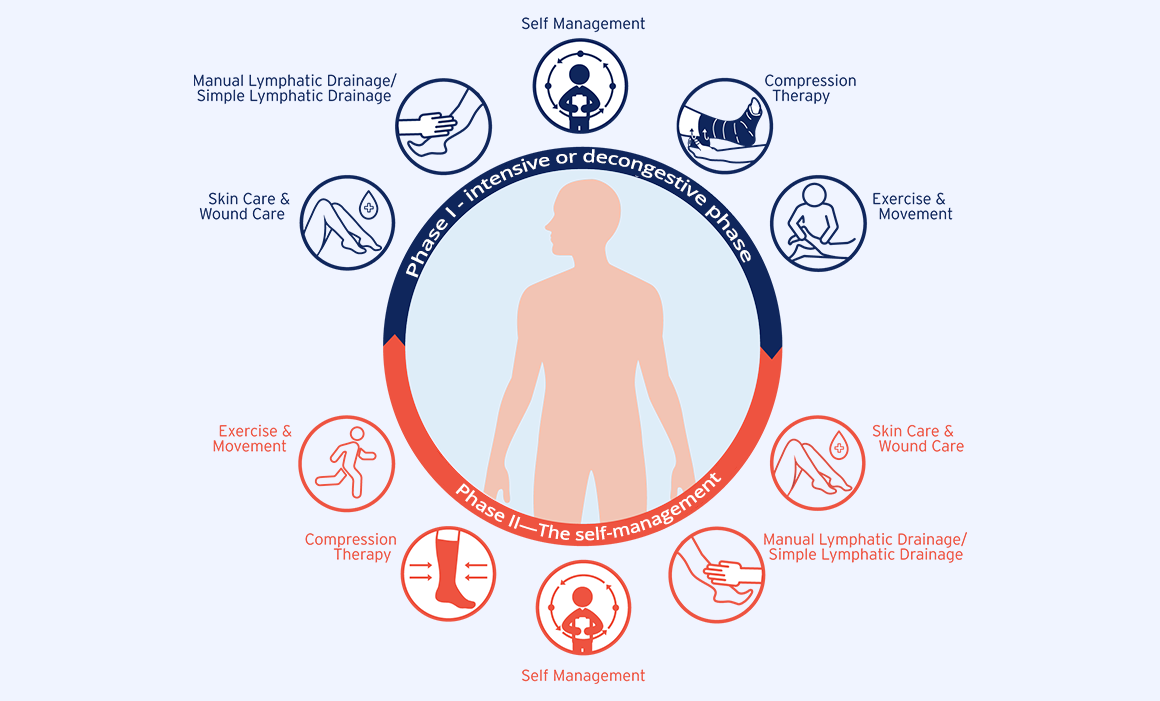Complete Decongestive Therapy (CDT) consists of two phases. Phase I, known as the intensive or decongestive phase, involves treating the patient until the affected body part is cleared of congestion. When the measurements of the affected body part reach a stable level, the patient can be moved to Phase II—the self-management phase. At this stage, the patient becomes responsible for preserving and enhancing the treatment outcomes achieved in the first phase.
Learn more about CDT for lymphedema treatment
Norton School of Lymphatic Therapy offers comprehensive online courses on lymphedema causes and treatment, including an introductory course to the current treatment methods. Sign up for the Complete Decongestive Therapy certification training and advance your professional career as a certified lymphedema therapist.

